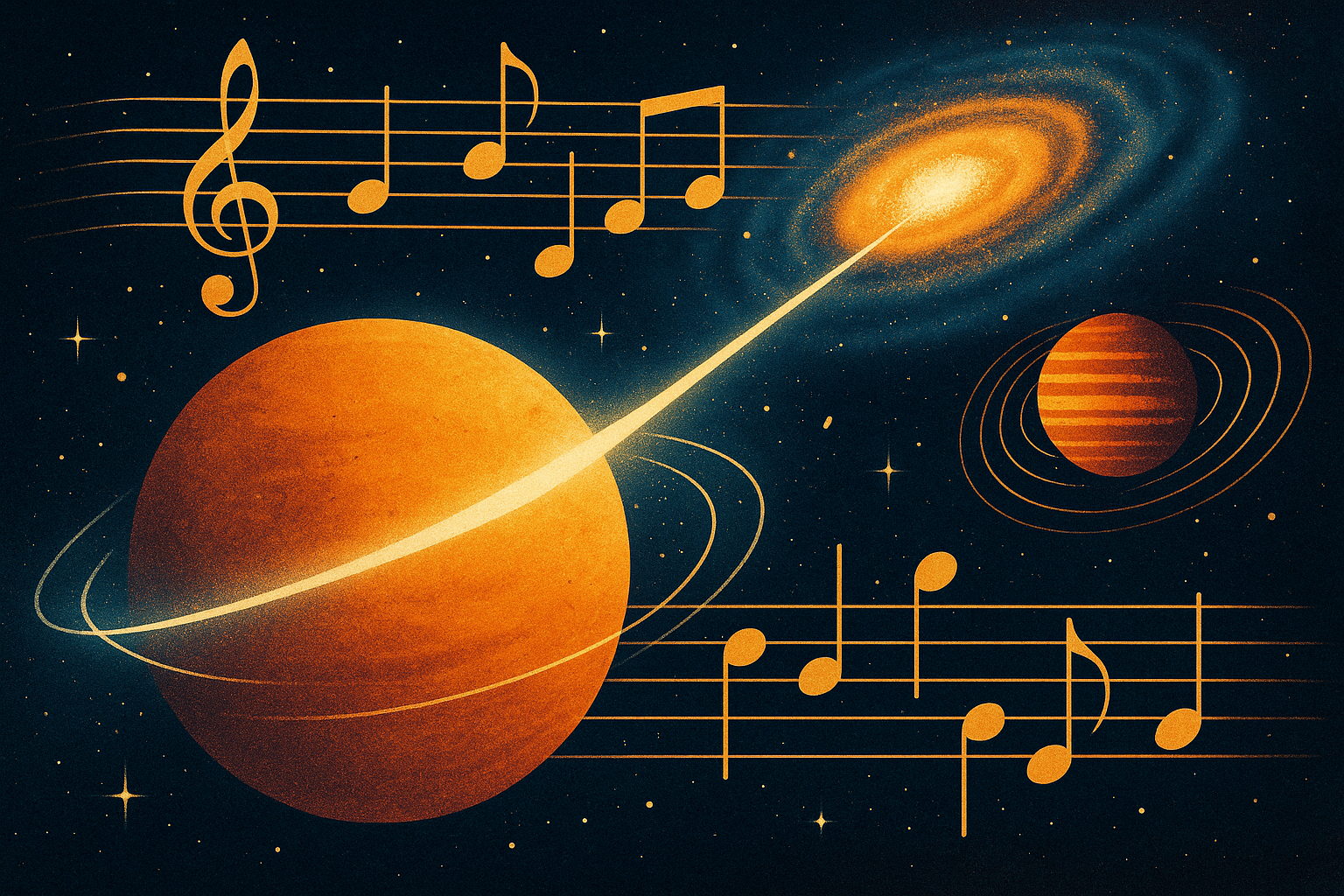우주에는 소리가 없다. 진공 상태에선 공기 분자가 없어 진동이 전달되지 않는다.
하지만 우리는 블랙홀의 ‘소리’를 들었다고 말한다.
이건 단순한 은유가 아니라, 데이터 기반 과학이다.
🌌 진공에서 음악을 추출하는 기술
NASA는 우주 공간에서 발생한 진동을 Sonification(음향화) 기술로 변환한다.
이는 빛이나 전자기파처럼 보이지 않는 데이터를 ‘소리’로 바꾸는 방식이다.
페르세우스 은하단 중심 블랙홀의 X선 진동을 사람이 들을 수 있는 주파수로 바꾸면,
묵직하고 깊은 저음이 만들어진다.
이 음원은 NASA 공식 채널을 통해 공개되었고
“우주는 고요하지만, 그 진동은 노래한다”는 설명과 함께
사람들의 상상력을 자극했다.
🪐 펄서, 리듬을 품은 별
펄서(Pulsar)는 초신성 폭발 후 남은 중성자별이다.
초당 수십 회 회전하며 규칙적인 전파를 뿜어내는데,
그 주기는 ‘자연의 메트로놈’이라 불릴 만큼 정확하다.
예술가들은 이 데이터를 기반으로
우주 리듬 머신이라는 사운드 아트 프로젝트를 구성했다.
🎼 별빛으로 쓴 악보
별의 밝기 변화, 공전 속도, 진동은 모두 시간 위에서 측정 가능한 수치다.
ESA 협업팀은 허블 망원경 데이터를 신디사이저 음원으로 전환했고,
MoMA에서는 관람객의 뇌파에 따라 실시간 음악이 바뀌는
인터랙티브 전시를 선보였다.
이처럼 데이터는 감각의 언어로 번역된다.
📡 공명의 과학, 침묵의 음악
**공명(Resonance)**이란, 외부 진동 주파수가 물체의 고유 진동수와 일치할 때
진폭이 커지는 현상이다. 와인잔 옆에서 특정 음을 내면 잔이 흔들리는 실험이 대표적이다.
우주의 주기도 이처럼 특정 패턴을 갖는다.
과학자는 이 진동 속에서 질서를 읽고,
예술가는 그 침묵 속 리듬을 악보로 만든다.
별은 말하지 않지만, 우리는 듣는다.
🧪 음소분석 코너
1. pulsar [ˈpʌl.sɑːr]
/ˈpʌl/: ‘펄’ /sɑːr/: ‘싸아르’ → 별이 펄-사~ 울린다고 상상
2. resonance [ˈrɛz.ə.nəns]
‘레즈’ + ‘넌스’ → 울림을 흘려내듯 부드럽게 발음
3. vibration [vaɪˈbreɪ.ʃən]
/vai/: ‘바이’ /ˈbreɪ/: ‘브레이’ /ʃən/: ‘션’
→ ‘진동’의 뜻. 입으로 파동을 그리는 느낌으로 천천히 읽기

🎼 The Silent Stars, the Music of the Universe
There is no sound in space.
Because there are no air molecules in a vacuum,
sound waves cannot travel.
Yet we often say we’ve heard the sound of a black hole.
Is this poetic exaggeration, or scientific reality?
🌌 Turning Silence into Sound
NASA transforms cosmic vibrations into sound
through a technique called sonification.
It converts invisible data like light and electromagnetic waves
into audible frequencies.
For example, X-ray vibrations from the center of the Perseus galaxy cluster
were compressed into the human hearing range (20–20,000 Hz),
resulting in deep, resonant tones.
This method was first introduced in 2003
through a NASA-CSA project called “Visualizing the Quiet”,
and is now used with Webb Telescope data.
NASA released this cosmic audio with the caption:
“The universe is silent, but its vibrations sing.”
The data became more than numbers—it became an experience.
🪐 Pulsars: Stars with Rhythm
Pulsars are neutron stars left behind after a supernova.
They rotate dozens of times per second,
emitting signals with incredible consistency—
earning the name “natural metronomes.”
Artists used pulsar data to create the “Cosmic Rhythm Machine,”
converting spin cycles into MIDI signals,
and producing rhythmic soundscapes.
In 2020, the Pulsar Music Project featured
a live orchestral performance using these samples.
The science became art; data became music.
🎼 Composing with Starlight
Stellar brightness, orbital shifts, and starquakes
can all be translated into sound.
Light becomes pitch; distance becomes melody.
ESA collaborated with artists to compose music
from real telescope data.
In 2021, MoMA’s Sounds of Space
used brainwave sensors from visitors
to generate real-time starlight music.
This bridged cosmic data with human emotion.
🧘 Healing through Cosmic Sound
Recently, meditation apps and sound therapy tools
have incorporated space audio.
Black hole hums and pulsar beats
have shown potential in regulating heart rate and brain waves.
In 2022, NASA launched a joint mental health study
called Space Resonance Therapy to explore this potential.
The silence of space may hold healing vibrations
#우주음악 #블랙홀소리 #펄서리듬 #공명원리 #데이터음향화 #천문학예술 #별의진동 #인터랙티브사운드 #NASA소리 #과학과예술의만남